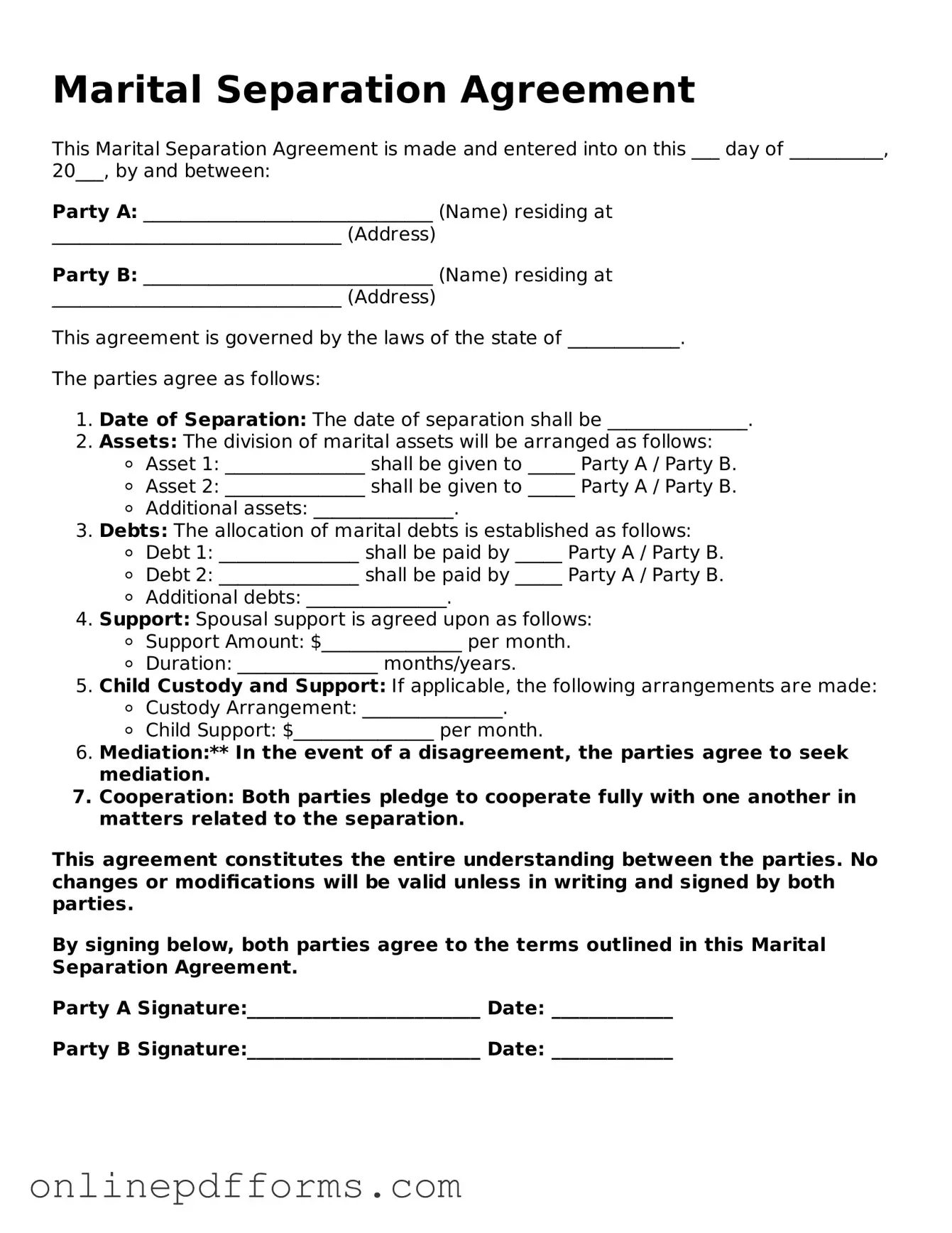The Marital Settlement Agreement is a document that outlines the terms of a divorce or separation between spouses. Similar to the Marital Separation Agreement, it details the division of assets, debts, and any arrangements regarding child custody and support. Both documents aim to provide a clear framework for the parties involved, ensuring that each individual's rights and responsibilities are defined and understood. The Marital Settlement Agreement is often used when the couple has already decided to divorce, while the Marital Separation Agreement can be used when the couple is still married but living apart.
A Parenting Plan is another document that shares similarities with the Marital Separation Agreement. This plan specifically addresses the care and custody of children after a separation or divorce. Like the Marital Separation Agreement, it includes provisions for visitation schedules, decision-making authority, and child support. Both documents prioritize the best interests of the children involved and aim to establish a cooperative parenting arrangement between the parents.
The Child Support Agreement is closely related to the Marital Separation Agreement as it outlines the financial responsibilities of one parent to support their children after separation. This document specifies the amount of support, payment frequency, and any additional expenses such as medical costs or educational fees. Both agreements focus on ensuring that children's needs are met while providing clarity on financial obligations.
The Property Settlement Agreement is another document that parallels the Marital Separation Agreement. It details how marital property and debts will be divided between the spouses. This agreement is crucial for preventing disputes over assets and liabilities. Both documents serve to formalize the terms of separation, ensuring that each party understands their rights regarding property ownership and financial responsibilities.
A Cohabitation Agreement, while typically used for unmarried couples, shares similarities with the Marital Separation Agreement in that it outlines the terms of living arrangements and financial responsibilities. This document can address property division, support obligations, and other aspects of the relationship. Both agreements aim to clarify expectations and responsibilities, reducing the likelihood of conflicts in the future.
The Non-Disclosure Agreement (NDA) can also be compared to the Marital Separation Agreement in terms of confidentiality. While the NDA focuses on protecting sensitive information shared between parties, the Marital Separation Agreement may include clauses that ensure privacy regarding personal matters and financial information. Both documents emphasize the importance of maintaining confidentiality to protect the interests of the parties involved.
When navigating real estate transactions, it can be beneficial to familiarize yourself with various legal documents, such as the Texas Quitclaim Deed, which allows for the transfer of property ownership. This form, found at https://pdftemplates.info/texas-quitclaim-deed-form, is particularly handy when dealing with ambiguous title situations or transferring property among close relations, ensuring clear understanding and smooth transitions in property ownership.
Lastly, the Divorce Decree is a legal document that finalizes a divorce, similar to the Marital Separation Agreement in that it includes many of the same terms regarding asset division, custody, and support. However, the Divorce Decree is issued by a court and legally terminates the marriage, while the Marital Separation Agreement is a mutual agreement made by the couple before or during separation. Both documents serve to protect the rights of each party and provide a clear outline of their responsibilities moving forward.
